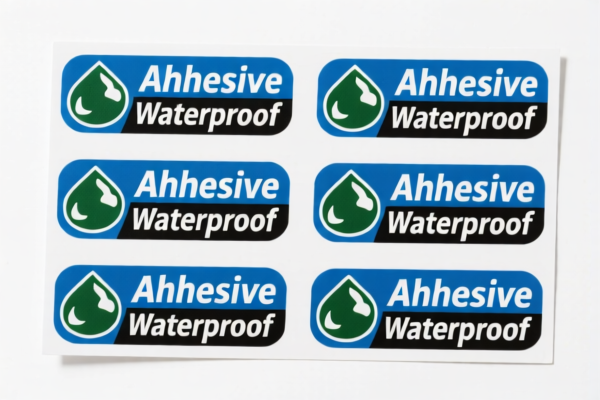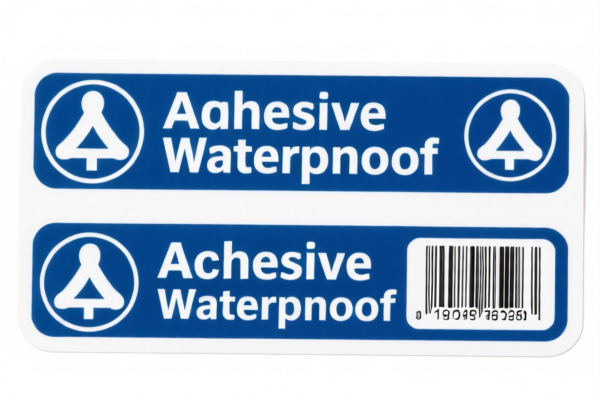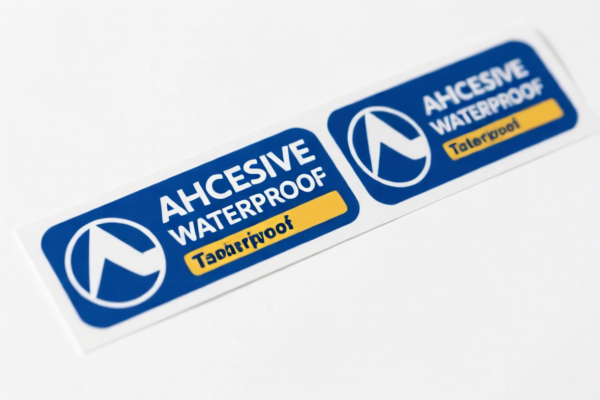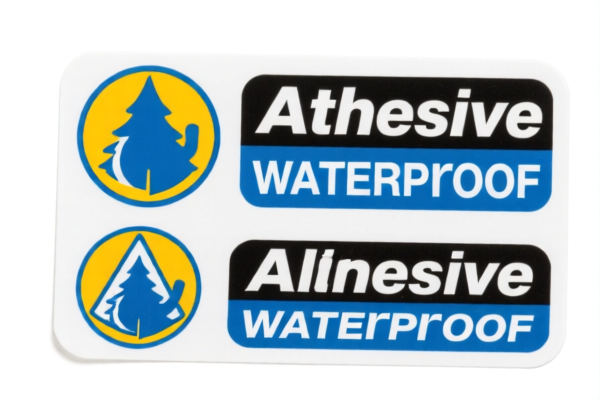| HS Code | Official Doc | Tariff Rate | Origin | Destination | Effective Date |
|---|---|---|---|---|---|
| 4908100000 | Doc | 37.5% | CN | US | 2025-05-12 |
| 4908900000 | Doc | 37.5% | CN | US | 2025-05-12 |
| 4911998000 | Doc | 37.5% | CN | US | 2025-05-12 |
| 4911996000 | Doc | 37.5% | CN | US | 2025-05-12 |
| 3919102055 | Doc | 60.8% | CN | US | 2025-05-12 |
| 3919905060 | Doc | 60.8% | CN | US | 2025-05-12 |
| 3921904010 | Doc | 34.2% | CN | US | 2025-05-12 |
| 3921905010 | Doc | 34.8% | CN | US | 2025-05-12 |




Waterproof Stickers
Waterproof stickers are adhesive labels designed to withstand exposure to water and other liquids without losing adhesion or readability. They are utilized across a broad spectrum of applications requiring durability in challenging environments.
Material
The core characteristic of waterproof stickers lies in their materials. Common substrates include:
- Vinyl: The most prevalent material, offering good print quality, flexibility, and resistance to water, UV rays, and abrasion. Different grades of vinyl are available, influencing durability and cost.
- Polyester: Known for superior durability, temperature resistance, and chemical resistance compared to vinyl. Often used for industrial labeling.
- Polypropylene (PP): A cost-effective option with decent water resistance, commonly used for temporary applications.
- Polyethylene (PE): Offers good chemical resistance but lower print quality and durability than vinyl or polyester.
Adhesive formulations are crucial. Common types include:
- Acrylic-based adhesives: Provide good adhesion to a variety of surfaces and excellent UV resistance.
- Rubber-based adhesives: Offer strong initial tack but may have lower long-term durability and UV resistance.
- Permanent adhesives: Designed for long-lasting adhesion and are difficult to remove.
- Removable adhesives: Allow for clean removal without leaving residue.
Often, a laminate layer (typically vinyl or polyester) is applied over the printed graphic for added protection against abrasion, UV fading, and chemicals.
Purpose
The primary purpose of waterproof stickers is to provide lasting identification, decoration, or information conveyance in wet or challenging conditions. Specific applications include:
- Product labeling: Identifying contents, providing instructions, and branding products exposed to moisture (e.g., beverages, outdoor equipment).
- Outdoor applications: Decorating vehicles, boats, windows, and outdoor equipment.
- Industrial labeling: Identifying pipes, containers, and assets in industrial environments.
- Safety labeling: Providing warnings and safety information that must remain legible in all weather conditions.
- Promotional use: Branding and advertising in outdoor settings or on products likely to encounter moisture.
Function
Waterproof stickers function by creating a barrier against moisture penetration. The substrate and laminate materials prevent water from reaching the adhesive layer, maintaining its tack. The adhesive itself is formulated to resist degradation from water exposure. UV-resistant inks and laminates prevent fading and discoloration from sunlight.
Usage Scenarios
- Bottles and containers: Used for beverage labeling, cleaning product labeling, and other applications where the label will be exposed to water.
- Outdoor equipment: Applied to kayaks, canoes, surfboards, bicycles, and other outdoor gear.
- Vehicles: Used for car decals, boat registration numbers, and window graphics.
- Industrial settings: Applied to pipes, valves, and containers to identify contents and provide safety information.
- Bathrooms and kitchens: Used for decorative purposes or to label containers.
Common Types
- Die-cut stickers: Cut to a specific shape, offering a custom appearance.
- Kiss-cut stickers: Cut around the graphic, leaving a clear border for easy application.
- Roll labels: Printed on a roll for automated application.
- Bumper stickers: Thick vinyl stickers designed for outdoor use on vehicles.
- Clear stickers: Made from transparent vinyl, allowing the underlying surface to show through.
- Epoxy dome stickers: Feature a clear epoxy coating for a 3D effect and added protection.
- Vinyl letter stickers: Individual letters cut from vinyl for custom signage.
Waterproof stickers can fall under several classifications depending on their composition and application. Here's a breakdown of potential HS codes based on the provided information:
- 4908.10.00.00: This code covers Transfers (decalcomanias), vitrifiable. These are transfers suitable for application by heat or pressure, potentially including waterproof varieties if they are designed to withstand such conditions. The total tax rate is 37.5%, comprised of a 0.0% base tariff and a 7.5% additional tariff, increasing to 30% after April 2, 2025.
- 4908.90.00.00: This code covers Transfers (decalcomanias): Other. If the waterproof stickers do not fall under the 'vitrifiable' category (4908.10.00.00), they would be classified here. The total tax rate is also 37.5%, with the same tariff structure as above.
- 3919.10.20.55: This code covers Self-adhesive plates, sheets, film, foil, tape, strip and other flat shapes, of plastics, whether or not in rolls: In rolls of a width not exceeding 20 cm: Other Other: Other. If the stickers are made of plastic and self-adhesive, and are supplied in rolls less than 20cm wide, this code applies. The total tax rate is 60.8%, consisting of a 5.8% base tariff and a 25.0% additional tariff, increasing to 30% after April 2, 2025.
- 3919.90.50.60: This code covers Self-adhesive plates, sheets, film, foil, tape, strip and other flat shapes, of plastics, whether or not in rolls: Other: Other Other. If the stickers are made of plastic and self-adhesive, but not in rolls less than 20cm wide, this code applies. The total tax rate is 60.8%, with the same tariff structure as above.
It is important to note that the final classification depends on the specific material composition (e.g., plastic type, adhesive type) and form of presentation (e.g., rolls, sheets).
Regarding HS codes 3919.10.20.55 and 3919.90.50.60, please note that the stickers must be made of plastic to be classified under these codes.
Customer Reviews
No reviews yet.